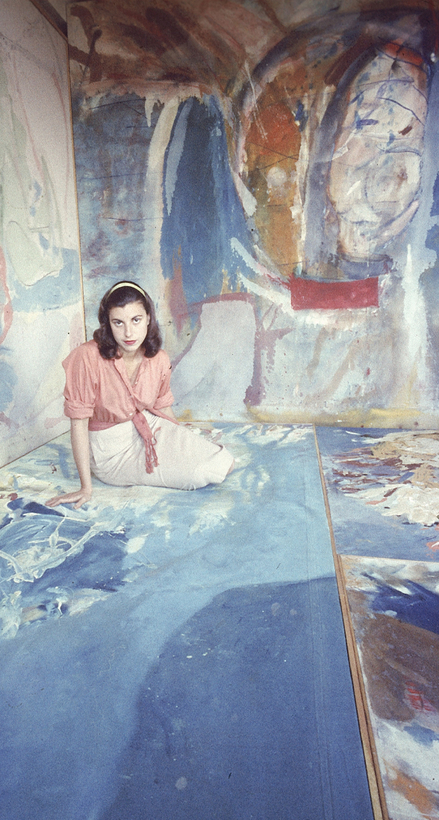“How does a place impact the work of an abstract artist?” the curator Elizabeth A. T. Smith asked herself as she put together “Abstract Climates: Helen Frankenthaler in Provincetown,” an exhibition of more than 30 paintings and works on paper that Frankenthaler produced during a decade of Provincetown summers from the late 1950s through the early 1970s. Organized with Lise Motherwell, Frankenthaler’s stepdaughter, and curator Alicia G. Longwell, the exhibition opened this past weekend at the Parrish Art Museum, in Water Mill, New York.
“Helen was influenced by landscapes; she really was not a landscape painter,” said Motherwell during a walk-through of the show, spread across three galleries in the Herzog & de Meuron–designed mega-barn off Route 27. “What she tried to do is capture the atmosphere of where she was and render the feeling of being in a place.” The show itself, with its serene, colorful canvases and sun-soaked, scrapbook-worthy ephemera, captures not only the feeling of a place but a sense of nostalgia for an idealized coastal American summer.

Alongside loose, light watercolors and the unconventional Beach, in which Frankenthaler mixed plaster of Paris with sand and coffee grounds, the clear blues of Sea Picture with Black stands out. You can almost hear a crash of early-morning surf, feel yourself bathed in pinkish dawn light. Provincetown Window, painted in a third-floor studio that looked out over the changing tides, mimics the play of late-afternoon sun on water. And the massive Provincetown I, with its Jackson Pollock–y drips and splashes (Frankenthaler was friendly with Pollock and, having spent time at his Springs studio, often laid her own canvases on the floor), is pure summer heat: warm Indian pinks, ruddy sepias, and clear French blues. Even the names of the works taste like salt air: Cool Summer, Breakwater, Low Tide, Blessing of the Fleet.
Frankenthaler’s serene, colorful canvases capture a sense of nostalgia for an idealized coastal American summer.
One of the highlights of putting together the show, Motherwell said, was the chance to tell Frankenthaler’s personal history. In the hallway, there’s a detailed time line, vitrines of photographs and letters, and a video in which Frankenthaler looks impossibly lithe and glamorous while she tiptoes around one of her massive canvases, a wineglass filled with paint-stained water in one hand and a brush in the other.

The Parrish show is just one of the major Frankenthaler exhibitions in 2019—a year when female Abstract Expressionists are finally getting their due. Gagosian, which has represented the artist’s estate since 2012, collaborated with the Helen Frankenthaler Foundation and Venetian Heritage on a show currently on view at Palazzo Grimani in Venice through the end of the Biennale in November, as well as a recently closed show of paintings at their Rome gallery. A show of Frankenthaler’s prints, a recent gift from the foundation, is also on view at the Princeton University Art Museum until October 20.
One piece to look out for is a handwritten letter, dated June 1961, that Frankenthaler wrote to her friend Grace Hartigan. A passage in particular captures the thrill of an empty calendar, the sublime narcotic high of having absolutely nothing to do: “We, the grown-ups, bump into but see relatively few. Hans [Hofmann] and [his wife] Miz, the Leslies, the Rothkos show their faces every so often but the others we see not at all + never plan to make any dates, and have no phone! Life, m’dear, is a breeze!” —Andrea Whittle

